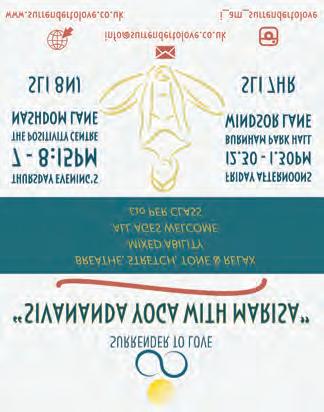
3 minute read
PARENTING Why it’s important to
In today’s technology focussed world, the ability to map read, navigate and successfully get from place to place, remains a vitally important skill to teach our children. At its most fundamental level, map reading develops children’s spatial thinking skills, which in turn can deepen their knowledge of maths, science and technology. Spatial thinking is something we use in many everyday situations, from rearranging a bookcase, to picturing situations in our ‘mind’s eye.’ It is the fundamental architecture which underpins our lifelong problemsolving skills.
It’s also a great excuse to get outdoors into the wilds and get back to basics with your child in natural or urban surroundings.
Advertisement
Stanfords, the largest map supplier in the world, reports that its sales figures in the last couple of years show that demand for physical maps is not waning. It seems that, as human beings, we prefer to plan our trips with a hard copy, making notes on it and keeping it as a treasured travel memento. Most significantly, a physical map can’t run out of battery power or be without signal in your hour of need!
Endurance adventurer and Ordnance Survey Get Outside Champion, Sean Conway, who has cycled, swum and run the length of Great Britain, is a lover of physical maps and has fond memories of learning how to map read as a child: ‘I remember being told how contour lines worked. It became a game to try and look for the steepest section of the map, and then go and find it. If you could climb it, we would!’ Here are five top tips for firing your child’s imagination and getting them engaged with the learned skill of map reading: 1. Just as it’s important to know
Why it’s important to teach children to map read
your left and right, it’s important to understand where north, east, south and west are on a map. You can remember them as: a. Naughty Elephants Squirt Water b. Nobody Ever Swallows Whales c. Never Eat Shredded Wheat 2. If your child is struggling to grasp contours, get them to draw concentric circles on one of their knuckles – when they reach their

finger, a hill appears! 3. Make directional and geographical vocabulary part of your dialogue with your children from a very early age, and whenever you are out and about together. 4. A great way to pass the time on a long family journey is to give your child a map and ask them to tick off the key symbols on the map as they spot them – eg pub, hospital, byway, footpath, wall, farm track.

This instantly turns any mundane journey into a treasure hunt! 5. Often as adults we become scared of maps because we think we won’t be able to decipher them. But just have a go, make it fun and easy going – you might just learn something yourself whilst nurturing your child’s life-long love of adventure. Map reading activities to try at home or away Get a map of your local area, holiday destination or grandparent’s house and get outside – open your eyes wide and take a look around! 1. What can you actually see around you? And what does it look like on your map when drawn from above? 2. Have you seen this map before? Are maps flat or three dimensional? Are there any features you can see? 3. Maps use pictures and symbols to explain features of a landscape/area rather than words. Can you locate the key? If you see a feature on the map you don’t recognise you can look it up on the key. 4. Can you decipher both the physical and human features on your map? Perhaps the park, beaches, forests and rivers or churches, factories, farms and harbours? 5. Make your own map – have a think about the important information you want to include, key physical or human features. Will you start and finish your journey in the same place?
If you get lost, your phone battery is flat or there’s no signal, you never know, some key map reading skills and abilities might just save your life. Maps give us a wealth of information about our surroundings – they are a clever, valuable and perhaps irreplaceable 2D representation of our incredible 3D world.











